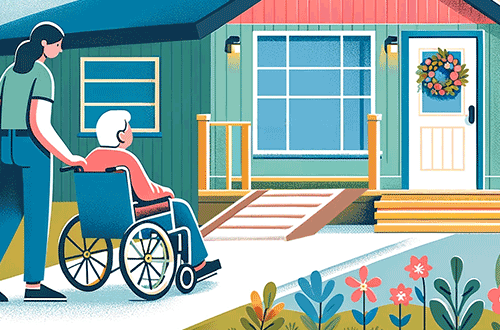In today’s age, it is becoming increasingly difficult to find suitable housing and support for the seniors and persons with disabilities in our lives. Many families are renovating their homes to accommodate the people they love. To make individual housing more affordable, and to help families take care of eligible family members in their homes, the government created the Multi-Generational Home Renovation Tax Credit (MHRTC).

Who qualifies as an “eligible individual”?
An eligible individual will be either a qualifying individual or a qualifying relation to a qualifying individual.
A qualifying individual is either:
- 65 years of age before the end of the renovation period taxation year
- 18 years of age before the end of the renovation period taxation year and is eligible to claim the disability tax credit in that same year
A qualifying relation of a qualifying individual is an individual who is at least 18 years of age and is (at any time in the year) a spouse, parent, grandparent, child, grandchild, brother, sister, aunt, uncle, niece, or nephew of the qualifying individual.
What renovations will qualify?
A “qualifying renovation” means a renovation, alteration, or addition to an eligible dwelling. The renovation must allow the eligible family member to live in the dwelling by creating a secondary unit.
This would include very specific components including:
- Separate entrance
- Bedroom
- Private bathroom facilities
- Kitchen
A secondary unit may be a newly constructed building, addition to existing dwelling or a renovation of existing living space if it meets the specific requirements.
Are there expenditures that I cannot claim?
The MHRTC is intended to support the addition of living quarters for elderly or persons with disabilities. It is not intended to support costs related to the following expenditures:
- Any expenditures incurred prior to December 31, 2022
- Routine repairs and maintenance, housekeeping, security/monitoring or similar
- Appliances
- Home entertainment
- Financing costs related to the qualifying renovation.
- Value of labour incurred if you complete the renovations on your own.
- Expenses that will be reimbursed in any capacity may not be claimed.
- Expenses claimed under the medical expense tax credit nor home accessibility tax credit may not be claimed.
- Expenses paid to anyone not at arm’s length may not be claimed unless that provider is also registered for GST/HST.
What else do I need to know?
There are a few other considerations that are important for anyone interested in claiming the MHRTC.
- Allowable expenditures up to $50,000 in respect to one qualifying renovation are permitted during the lifetime of an eligible individual.
- The eligible individual must consider the secondary unit to be their principal residence. They may or may not live with you prior to the start of renovation, however the eligible individual must intend on living in the newly constructed dwelling within 12 months after completion.
- It is important to consider potential impact on the ability to claim your principal residence exemption, therefore it is important to discuss with an advisor prior to claiming this credit.
The multi-generational home renovation tax credit is a useful yet complex tool to accommodate loved ones as they require additional support. For more information on this tax credit, reach out to us at Accent CPA for trusted advice.
